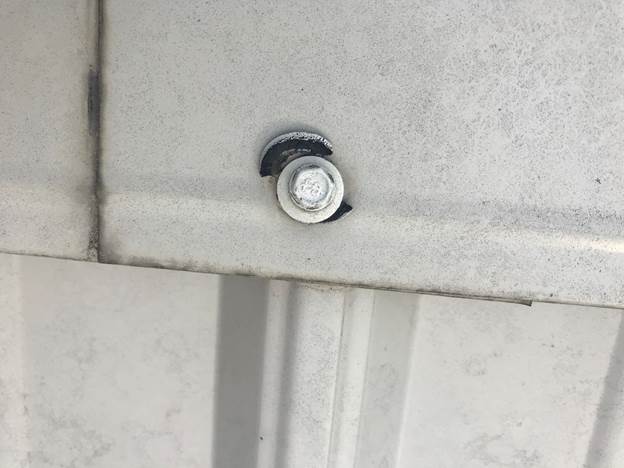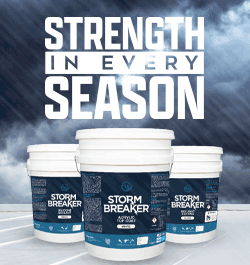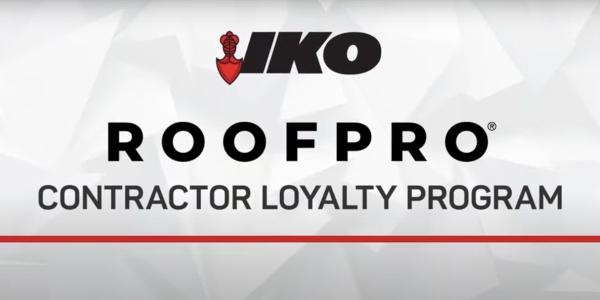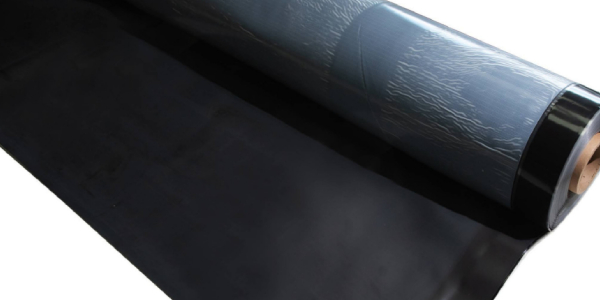Common issues with exposed metal roofing fasteners

Roofing system without metal roofing fasteners eliminates leaks caused by poorly installed gaskets and screws.
If you’ve just discovered a leak in what you thought was your forever metal roof, you’re probably pretty understandably annoyed. Unfortunately, your frustrations aren’t all that uncommon. A high-quality metal roof will dramatically outlive a standard roofing shingle, that’s all true. However, it’s not impossible for these beautiful roofs to spring a leak. And here’s why: those flexible rubber washers or tiny gaskets that form a seal around roofing screws and screw penetrations? They fail. And when they fail, you’re left with a hole in your beautiful metal roof.
Fact: Metal doesn’t leak… penetrations in metal leak
It’s well-known within the professional roofing community that the single largest culprit for metal roof leaks are roofing screws and faulty washers. In fact, this industry buzz is the very reason we invented the StealthBond® metal roofing system, a patented and approved alternative to traditional screw installations. Forget the screws and eliminate metal roof leaks with StealthBond®.
Theoretically, metal roofing screws keep water out by compressing a rubber washer at the base of the screw head against the metal roofing panel. As the screw is driven into the metal roofing panel, the rubber washer effectively becomes a gasket between the roofing panel and the screw. Simple enough, right? Unfortunately, there are a myriad of ways this simple process can go terribly awry.
Improper Metal Roofing Screw Installation
A properly driven screw is perfectly perpendicular to the panel, is driven straight and with good penetration. When this happens, the rubber gasket is seated firmly against the roof. However, all it takes is one poorly driven screw to make a mess of your attic and your home.
Over Driven Screws
A very common mistake, one that’s often made in an attempt to ensure a tight seal, is over driving a screw. When a screw is tightened too much, it can cause the washer to crack, cup, or even spin out of place entirely.
Under Driven Screws
This often occurs as a reaction to over driving screws. When insufficient amounts of torque are applied to the screw, the seal will not seat properly and water can flow in around the screw penetration.
Poorly Angled Screws
If a screw is driven into the metal roofing panel at an angle, the rubber washer cannot sit flatly on the roof and will not seal.
Poorly Installed Screws
Occasionally, a screw misses the mark altogether and misses the metal strut or wood framing that it needs to bite securely. When this happens, the washer has nothing to seal against. Poorly installed screws can be hard to detect because often, the screw is there and on visual inspection, may look perfect. It’s only after you touch it that you realize it’s not secured to anything!
Mother Nature is Tough on Rubber
Have you ever noticed how hard and inflexible the rubber is on that backyard tire swing? That’s because the relentless exposure to hot summer sun and icy winter storms causes rubber to begin to deteriorate. Now, imagine the effects of Mother Nature on a tiny rubber screw washer and then amplify them against the heat of a reflective metal roof. The heat and exposure work together to cause the washers to degrade, deteriorate and eventually fail.
Needless to say, with the thousands of screws that are used in a typical metal installation, the odds of one bad screw (and the leak that inevitably follows) are pretty high.
Luckily with the advancements in adhesive technology, you can now have a metal roofing system without exposed fasteners. Turn your sights to StealthBond®, the first adhesive-based metal roof installation system that eliminates the need for exposed fasteners.
To learn more about StealthBond® System, download our ebook Adhesive Innovations in Metal Roofing .
About StealthBond®
The StealthBond® installation system provides a luxurious concealed fastener look for 5V Crimp metal roofs—the “Key West” look without all the screws.
Each StealthBond® roofing installation is custom, and StealthBond® dealers are authorized and trained to give homeowners a beautiful roof they can be proud of.
To learn more about StealthBond® visit here.
Editor’s note: This article was first published in StealthBond®s blog and can be viewed here.






















Comments
Leave a Reply
Have an account? Login to leave a comment!
Sign In